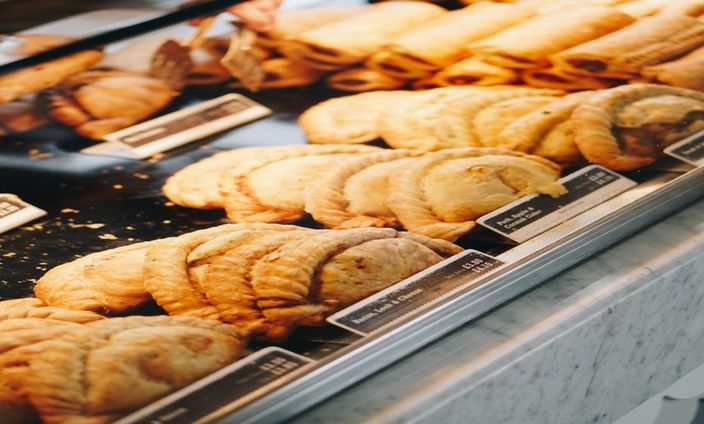
The Cornish Pasty History and Recipe
At Campbells, we love celebrating food. The Cornish pasty originates from Cornwall and traditionally consists of beef, potatoes, swede, and onion cooked together then wrapped in uncooked pastry which is then baked in an oven. In some ways it is similar to a Scottish bridie, the South American empanada, or the Jamaican patty. One of the unique aspects of the Cornish pasty is the distinct half-moon shape and delicately folded seam. These days there are many modern varieties of Cornish pasty that can be made with all types of minced and diced meat including both beef and lamb.
Explore our Minced and Diced Beef Products
The humble pasty is also the national dish of Cornwall and accounts for 6% of the entire food economy of the region. The exact origins of the pasty are unclear, but they are heavily associated with Cornish miners and the Cornish diaspora who moved across the world to North and South America, Australia, New Zealand, and South Africa. This is why the Cornish pasty (or similar variations of it) can be found almost anywhere.
The origins of the word pasty come from Medieval French paste, which in turn comes from Latin pasta meaning dough. The French cookbook Le Viandier dates back to 1300 and has several pasty recipes containing a mix of meat, vegetables, and sometimes cheese cooked in a pie, and the 1393 cookbook Le Menagier de Paris contains several recipes for pies or pasté with different assortments of meat.
The first mention in English language texts, although it is very likely that the pasty existed in Britain a long time before the mention, is in a 13th century charter by Henry III in which Great Yarmouth was to send 24 pasties to the sheriffs of Nottingham who would then deliver them to the king. The pasty was at this point associated with wealth and the aristocracy, and would remain so for the next few hundred years. For example, venison pasties were served at the installation feast of the chancellor of England and archbishop of York in 1495, and Jayne Seymour who was the third wife of Henry VIII mentioned them in a letter, as did the MP and writer Samuel Pepys who referenced them in his diaries in 1667.
It wasn’t until the 17th and 18th centuries that the pasty became known as a food of the working population, particularly among coal and tin miners. This is said to be because the shape made them ideal to eat as a full meal by itself without the need for cutlery, and the thick pastry ensures that the ingredients are kept warm or can be easily reheated on a shovel placed on top of a fire.
The first reference to the pasty being a specifically Cornish food actually dates to 1843 in The Nelson Examiner and New Zealand Chronicle, the first paper based in New Zealand’s South Island. In this entry the pasty is described as being carried in the pocket of working Cornish men. By the 1860’s the term ‘Cornish Pasty’ was being widely used across the UK and beyond.
These days the Cornish Pasty plays an important role in the culture and economy of Cornwall, with the Cornish Pasty Association being the official representative body to protect the cultural status of the Cornish Pasty. Here are some of our favourite facts from them about the Cornish Pasty, and if you are inspired to make your own have a look at our minced and diced meat products.
• 120 million pasties are made every year.
• Crib and Croust are words used in Cornwall to describe a snack to eat.
• 2000 people work in pasty production, many are full-time and permanent.
• The technique used to seal a pasty is called crimping, and is still mostly done by hand. A pasty crimped by someone who is right-handed is called a hen pasty, and a pasty crimped by someone who is left-handed is called a cock pasty.
• An experienced pasty maker can make 3 or 4 pasties a minute, but up to 7 is not unheard of.
Cornish Pasty Recipe
INGREDIENTS:
For the pastry
- 500g plain flour, and a little more for dusting
- 1 beaten egg
- 125g butter
- 125g lard
For the filling
- 400g of diced or minced meat, beef or lamb
- 150g swede, peeled then finely chopped
- 2 medium sized potatoes, peeled then finely chopped
- 2 onions, finely chopped
- Salt and pepper to taste
METHOD:
- Rub the butter and lard into the flour until you have the texture of breadcrumbs.
- Add in a few tablespoons of water a little at a time and knead into the flour until you have a dough.
- Cut into 4 equal parts, place on a tray, cover, and set in the fridge to chill for 60 minutes.
- Mix the vegetables and meat together, spoon in equal portions.
- Roll out into circles around 20cm in diameter, a side plate is ideal as a guide.
- Spoon in the vegetable and meat mix into each circle of pastry.
- Lightly brush the edges of the pastry, then fold over into a semicircle.
- You can then twist the edge along in the same direction to crimp it.
- When you have finished folding or crimping the pasty, glaze with the remaining egg.
- Put the pasties on a baking tray and place in the oven at 170C/Gas Mark 3 for 50-55 minutes or until the pasty are golden.